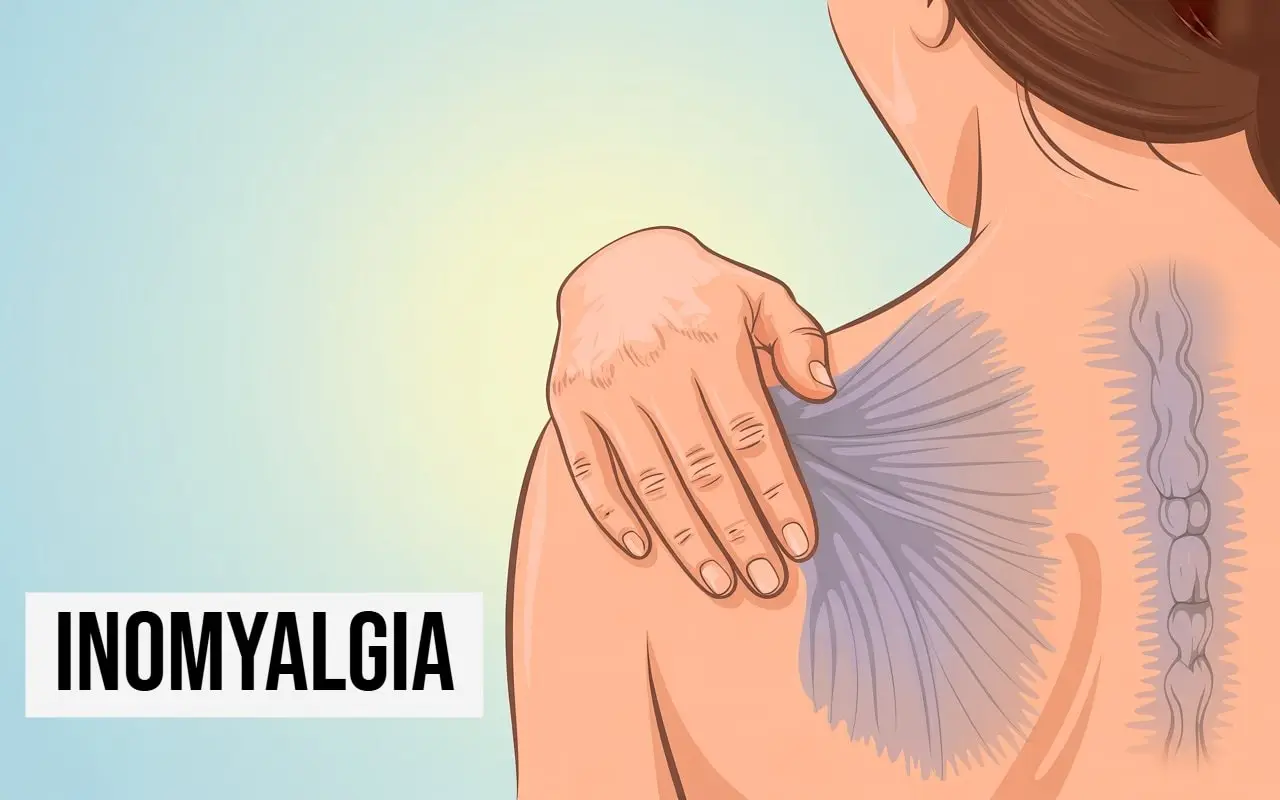We’ve all experienced muscle pain at some point—the soreness after a tough workout, the ache from sleeping in an odd position, or the stiffness from a long day at a desk. For most, this pain is temporary and fades with rest and time. However, for a significant number of people, muscle pain is a constant, unwelcome companion. This chronic and often debilitating condition is frequently referred to by a broad but crucial term: inomyalgia.
While not a formal diagnosis itself, “inomyalgia” (from the Greek roots ino- for “muscle” and -myalgia for “muscle pain”) is a descriptive term used to capture the essence of persistent, widespread pain originating in the muscles and soft tissues.
What Exactly is Inomyalgia?
Think of inomyalgia as an umbrella term. It describes a state of chronic muscle pain that lacks a clear, singular cause like a direct injury or a systemic disease such as lupus or rheumatoid arthritis. It’s the medical way of saying, “The primary problem is ongoing pain in the muscles, and we need to understand why.”
The most well-known and specific condition under this umbrella is fibromyalgia. Fibromyalgia is a central nervous system disorder characterized by widespread inomyalgia, accompanied by other symptoms like fatigue, sleep disturbances, and cognitive issues (often called “fibro fog”). However, not everyone with chronic muscle pain meets the strict criteria for fibromyalgia. Their condition might be labeled as myofascial pain syndrome (affecting specific “trigger points”), chronic fatigue syndrome (where pain is a key feature), or simply as non-specific inomyalgia.
Recognizing the Symptoms: More Than Just Aches
Inomyalgia is more than just soreness. Its symptoms can be complex and vary from person to person, but they often include:
- Widespread Pain: A deep, burning, throbbing, or aching pain that persists for months and affects multiple areas of the body.
- Muscle Tenderness: Specific spots or widespread areas that are extremely sensitive to pressure, even from a light touch.
- Stiffness: Particularly upon waking or after periods of inactivity.
- Fatigue: An overwhelming and unrefreshing tiredness that sleep doesn’t resolve.
- Sleep Disturbances: Difficulty falling asleep, staying asleep, or achieving restorative deep sleep.
- Cognitive Dysfunction: Trouble with concentration, memory, and mental clarity (“brain fog”).
The Root of the Pain: What Causes Inomyalgia?
The exact cause of chronic inomyalgia remains elusive, and it’s likely different for each individual. Researchers believe it’s not a problem with the muscles themselves but rather with the way the central nervous system processes pain signals. Key theories include:
- Central Sensitization: This is the leading theory. It suggests that the nervous system goes into a constant state of “high alert,” amplifying normal pain signals. What should feel like a minor ache is perceived by the brain as severe, debilitating pain.
- Abnormal Pain Neurotransmitters: People with conditions like fibromyalgia often have altered levels of neurotransmitters in the brain—such as elevated substance P (which amplifies pain signals) and lower levels of serotonin and norepinephrine (which help inhibit pain).
- Genetic Predisposition: Inomyalgia often runs in families, suggesting a genetic component that makes some people more susceptible.
- Triggers: A physical event (like a car accident, surgery, or infection) or a period of significant psychological stress can often act as a trigger that sets off the cycle of chronic pain.
Finding a Path to Management: How is Inomyalgia Treated?
There is no single cure for inomyalgia, but it is a manageable condition. The goal of treatment is to reduce symptoms and improve quality of life through a multi-faceted approach:
- Medication: Certain medications can help calm the overactive nervous system. These may include certain antidepressants (like duloxetine) and anti-seizure drugs (like pregabalin). Over-the-counter pain relievers are often less effective as the pain is not primarily from inflammation.
- Therapy:
- Physical Therapy: A physical therapist can design a gentle exercise program to improve strength, flexibility, and stamina without exacerbating pain.
- Cognitive Behavioral Therapy (CBT): CBT is highly effective in teaching patients how to change their perception of pain, develop coping strategies, and manage the stress and anxiety that often accompany chronic illness.
- Lifestyle Modifications:
- Pacing: Learning to balance activity with rest is crucial. “Pacing” means breaking tasks into manageable chunks to avoid overexertion and subsequent pain flares.
- Stress Reduction: Practices like mindfulness, meditation, and gentle yoga can significantly lower stress levels, which in turn can help reduce pain sensitivity.
- Sleep Hygiene: Establishing a consistent sleep routine is vital for managing fatigue and pain.
Living with Inomyalgia
Receiving a diagnosis of a chronic pain condition can be overwhelming, but it is also the first step toward reclaiming control. Living with inomyalgia involves becoming an expert in your own body, learning your limits, and advocating for your needs. Connecting with support groups, either in person or online, can provide immense comfort and practical advice from others who understand the journey.
If you suspect you are experiencing the symptoms of chronic inomyalgia, the most important step is to speak with a healthcare provider. While the path may be challenging, with the right combination of medical care, therapy, and self-management, it is possible to reduce the pain and live a full, engaged life.

